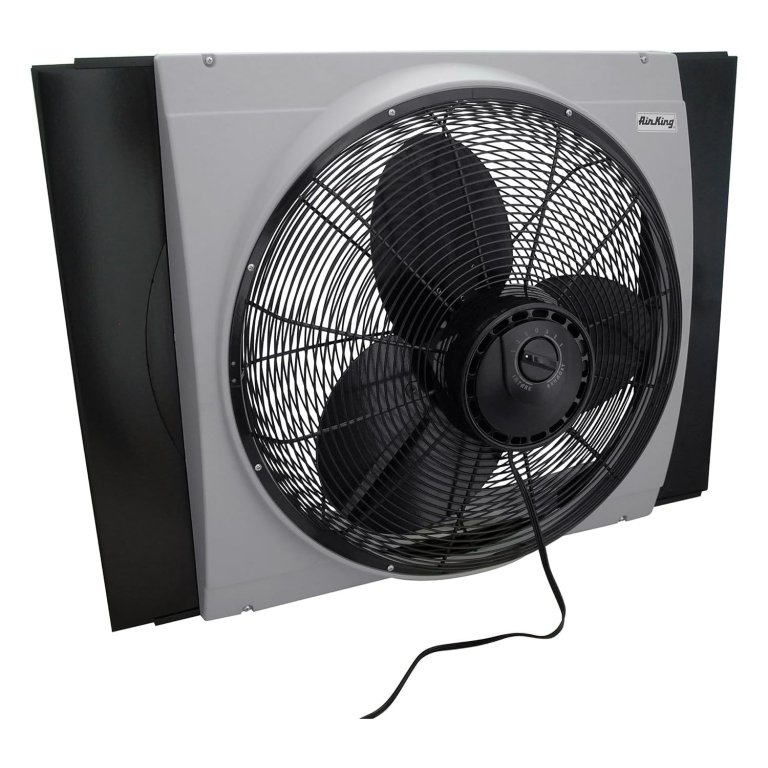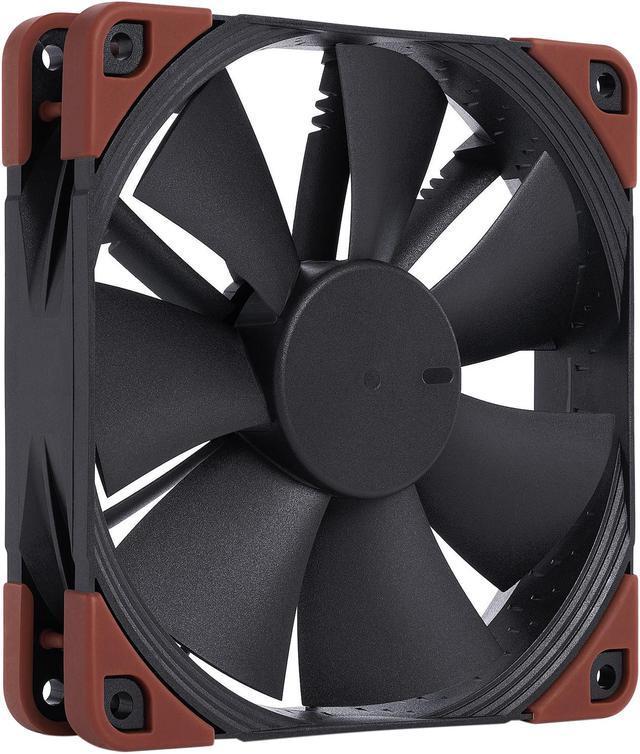Are you wondering what RPM is considered good for a cold fan? Choosing the right fan speed can make a big difference in how effectively your fan cools your space.
If your fan is too slow, it might not cool enough. Too fast, and it could be noisy and waste energy. You’ll discover the ideal RPM range that balances powerful airflow with quiet operation. Understanding this will help you pick or adjust your fan to keep your environment comfortable without any hassle.
Keep reading to find out exactly what RPM works best for your cold fan and how it affects your comfort.

Credit: www.bobvila.com
Cold Fan Basics
Understanding the basics of a cold fan helps in choosing the right RPM for efficient cooling. Cold fans are designed to move air and lower temperature in devices or rooms. Their speed, measured in revolutions per minute (RPM), affects how well they perform.
Choosing the correct RPM ensures the fan runs quietly and cools effectively. Fans with too low RPM might not cool enough. Fans with very high RPM can be noisy and use more power.
What Is Rpm In Cold Fans?
RPM means how many times the fan blades spin in one minute. Higher RPM means faster spinning blades and more air movement. Lower RPM means slower spinning and less air moved.
Typical Rpm Range For Cold Fans
- Low speed: 800 to 1200 RPM
- Medium speed: 1200 to 1800 RPM
- High speed: 1800 to 2500 RPM
Most cold fans work well between 1000 and 2000 RPM. This range balances noise and cooling power.
Factors Affecting Good Rpm For Cold Fans
- Size of the fan blades
- Location and space where the fan is used
- Noise preference of the user
- Power consumption limits
Smaller fans may need higher RPM to move enough air. Larger fans can run slower but still cool well.

Credit: www.newegg.ca
Importance Of Rpm In Cooling
RPM, or revolutions per minute, shows how fast a fan spins. It plays a key role in cooling devices. A good RPM ensures enough airflow to move heat away quickly. Fans with low RPM may not cool effectively. Fans with very high RPM can be noisy and use more energy.
Understanding the importance of RPM helps choose the right fan. It balances cooling power and noise levels. The goal is to keep things cool without disturbance.
How Rpm Affects Cooling Efficiency
Higher RPM means the fan blades spin faster. This moves more air across hot surfaces. More airflow means heat leaves faster. This improves cooling speed and keeps devices safe.
Finding The Right Rpm For Quiet Operation
Fans with very high RPM often make loud noise. This can be distracting in quiet places. Choosing a fan with moderate RPM gives good cooling and low noise. Quiet cooling fans improve comfort without losing performance.
Balancing Energy Use And Cooling Power
Fans with high RPM use more electricity. This raises energy costs. A fan with balanced RPM saves power but still cools well. Efficient fans help reduce bills and keep devices cool.
Factors Affecting Rpm
The RPM of a cold fan depends on several important factors. These factors influence how fast the fan blades spin and how well the fan cools the system. Understanding these elements helps in choosing the right RPM for your cold fan. Each factor plays a key role in fan performance and efficiency.
Fan Design
The shape and size of the fan blades affect RPM. Fans with larger blades usually spin slower but move more air. Smaller blades can spin faster but may move less air. The angle and curve of blades also change airflow and speed. Good design balances speed and airflow for best cooling.
Motor Efficiency
The motor inside the fan controls how fast it can spin. A strong motor can keep a high RPM for longer without overheating. Efficient motors use less power and last longer. Poor motor quality can limit the fan’s maximum RPM and cause noise or failure.
Environmental Conditions
Temperature and humidity around the fan impact its RPM. High heat can make the motor work harder, lowering speed. Dust and dirt buildup can slow down fan blades. Proper placement in a clean, cool area helps maintain steady RPM and good cooling.
Measuring Rpm
Measuring the RPM (revolutions per minute) of a cold fan is key to understanding its performance. RPM shows how fast the fan blades spin. A good RPM ensures the fan cools efficiently without using too much power. Accurate measurement helps maintain the fan and avoid overheating issues.
Tools And Techniques
Several tools help measure fan RPM easily. A handheld tachometer is popular. It uses a laser to count blade spins quickly. Some tachometers have reflective tape you place on a blade for better accuracy.
Another method is using smartphone apps with built-in sensors. They detect fan speed by sound or vibrations. This is less precise but good for quick checks.
For continuous monitoring, digital RPM meters connect directly to the fan’s motor. These provide real-time data. They are useful in industrial or computer cooling setups.
Common Measurement Challenges
- Fan blades can be hard to see, especially in low light.
- Reflections or dust on blades might cause false readings.
- Vibration from other devices can interfere with sensor accuracy.
- Some fans have variable speeds, making RPM unstable.
- Incorrect placement of sensors may result in wrong data.
To get the best RPM reading, ensure clear visibility and stable conditions. Use the right tool based on your fan type and environment.
Determining Optimal Rpm
Determining the optimal RPM for a cold fan is key to maximizing its cooling efficiency while keeping noise and energy use in check. You want your fan to move enough air to cool effectively without wasting power or becoming a nuisance. Finding that balance depends on several factors, including the fan’s design and the environment where it operates.
Balancing Performance And Efficiency
Higher RPM means more airflow, which can cool faster. However, running your fan at maximum speed all the time can drain more energy and generate excessive noise. A fan spinning at around 1000 to 1500 RPM often hits the sweet spot—providing solid cooling without overworking the motor.
Think about your experience with fans at home. When you crank the speed up too high, it might feel cooler, but the noise can become distracting. Slowing it down slightly keeps the room comfortable and your electricity bill lower. Adjusting RPM based on your immediate needs can save energy and extend your fan’s lifespan.
Considerations For Different Environments
Where you use your cold fan affects the ideal RPM setting. In a small bedroom, a lower RPM might suffice to circulate air gently without disturbing your sleep. In contrast, a larger living room or office space could require a higher RPM for effective cooling.
- Humid areas may benefit from a moderate RPM to avoid excessive moisture buildup.
- Dry climates might allow for higher RPM settings without discomfort.
- Enclosed spaces need careful RPM tuning to prevent stale air pockets.
Have you noticed how the same fan setting feels different in various rooms? That’s because the environment plays a huge role in what RPM works best. Experiment with your fan’s speed and observe how the room’s temperature and comfort level change.
Common Rpm Ranges For Cold Fans
Understanding the common RPM (Revolutions Per Minute) ranges for cold fans is key to choosing the right fan for your needs. RPM determines how fast the fan blades spin, directly affecting air flow and cooling efficiency. Whether you want a quiet fan for your workspace or a powerful one to cool down a large area, knowing these ranges helps you make an informed decision.
Low Rpm Benefits
Fans running at low RPM usually spin between 500 and 1,000 RPM. This range offers quieter operation, making it ideal for bedrooms or offices where noise can be distracting. You get steady airflow without the distraction of loud fan noise.
Besides being quiet, low RPM fans also use less electricity. If you’re concerned about energy bills or want an eco-friendly option, this can be a big plus. They are also less likely to wear out quickly, giving you longer fan life.
High Rpm Impacts
High RPM fans often operate at speeds above 1,200 RPM, sometimes reaching up to 3,000 RPM or more. These fans deliver stronger airflow, which is perfect for cooling larger rooms or outdoor spaces. However, this power comes with increased noise levels, which might not suit every environment.
Running a fan at high RPM can also lead to quicker wear and tear. I once used a high RPM fan in a small room and noticed it needed maintenance much sooner than a low RPM fan I had before. Consider whether you want maximum cooling or longer-lasting, quieter performance.
Troubleshooting Rpm Issues
RPM issues in cold fans can cause poor cooling or noisy operation. Troubleshooting helps find the root cause quickly. Understanding common problems and knowing how to adjust RPM can improve fan performance. This section guides you through identifying and fixing RPM-related troubles effectively.
Identifying Common Problems
- Fan spins too slowly or not at all.
- Fan speed fluctuates irregularly.
- Excessive noise during operation.
- Fan stops suddenly after running.
- Overheating despite fan running.
These symptoms often point to issues with RPM settings or hardware faults. Check fan blades for dirt or damage. Inspect wiring and power connections for looseness or corrosion.
Solutions For Rpm Adjustments
- Clean fan blades and motor housing to reduce resistance.
- Tighten or replace loose or damaged wiring.
- Use a fan controller to set appropriate RPM levels.
- Replace faulty sensors that affect speed regulation.
- Lubricate fan bearings to enable smooth spinning.
- Ensure proper voltage supply according to fan specifications.
Adjusting RPM to a suitable range can enhance cooling and reduce noise. Most cold fans work well between 1000 and 2000 RPM. Avoid exceeding manufacturer recommendations to prevent damage.
Enhancing Fan Performance
Enhancing a cold fan’s performance ensures better cooling and longer device life. Proper fan speed, measured in RPM (revolutions per minute), plays a key role. Fans running at an optimal RPM balance airflow and noise levels. Adjusting and maintaining this speed keeps the system cool and quiet.
Maintenance Tips
- Clean fan blades regularly to remove dust and debris.
- Check for loose screws or mounts that cause vibration.
- Lubricate fan bearings to reduce friction and noise.
- Inspect power connections for stability and good contact.
- Replace damaged or worn-out fan filters to maintain airflow.
Upgrading Fan Components
- Choose fans with higher RPM ratings for stronger airflow.
- Install quality ball-bearing fans for durability and quieter operation.
- Use PWM (pulse-width modulation) fans for precise speed control.
- Upgrade to larger fan blades for better air movement at lower speeds.
- Select fans with aerodynamic blade designs to reduce noise.

Credit: www.amazon.ca
Frequently Asked Questions
What Rpm Is Considered Good For A Cold Fan?
A good RPM for a cold fan typically ranges between 1000 to 2000 RPM. This speed ensures efficient cooling without excessive noise or power consumption. It balances airflow and energy use, keeping the system cool and quiet.
How Does Rpm Affect Cold Fan Performance?
Higher RPM increases airflow, enhancing cooling efficiency. However, too high RPM can cause noise and wear. Optimal RPM ensures effective cooling while maintaining quiet operation and fan longevity.
Why Is Fan Rpm Important For Cooling Systems?
Fan RPM controls airflow, directly impacting heat dissipation. Proper RPM keeps components cool, prevents overheating, and improves system stability and lifespan. It ensures balanced performance and noise levels.
Can Too High Rpm Damage A Cold Fan?
Yes, excessive RPM can cause fan wear and noise. It may reduce fan lifespan and increase power consumption. Maintaining recommended RPM protects the fan and ensures reliable cooling.
Conclusion
A good RPM for a cold fan depends on its size and purpose. Most cold fans work well between 1000 and 2000 RPM. This range balances noise and cooling power. Too low RPM may reduce airflow. Too high RPM can make loud noise.
Choose a fan that fits your needs and space. Regular cleaning also keeps the fan running smoothly. Understanding RPM helps you pick the best fan for comfort. Keep these points in mind for a cool and quiet environment.

Home Improvement Specialist & Writer at HomeFixio
Caden Rutherford is a seasoned home improvement specialist with extensive hands-on experience in residential construction, renovations, and design. With a keen eye for detail and a passion for transforming spaces, Caden shares practical advice and expert solutions to enhance the functionality and beauty of homes. As a writer for HomeFixio, Caden combines technical knowledge with creative flair, providing readers with informative guides on everything from structural improvements to aesthetic upgrades, empowering homeowners to achieve their ideal living spaces.
